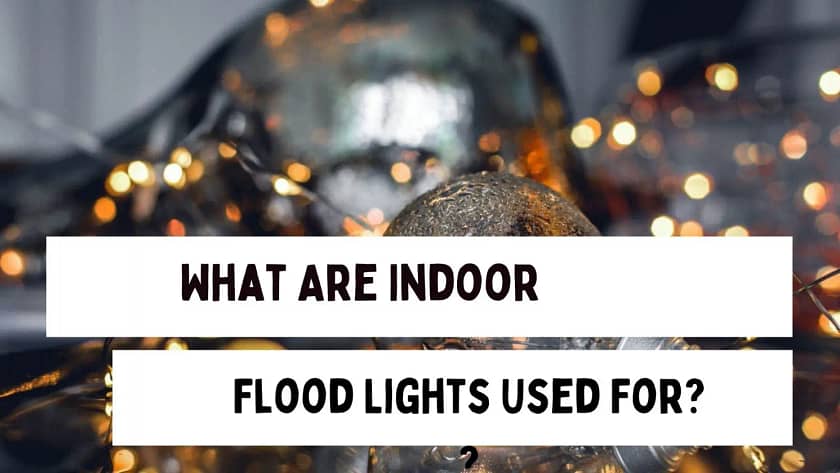Indoor floodlights are lighting fixtures that emit a wide beam of light. They’re most commonly used to illuminate an area with artificial, rather than natural, light – hence the name “floodlight”. LED Floodlights are very energy efficient and have more lumens per watt than any other type of conventional fixture.
Indoor floodlights are helpful in areas like basements and garages that get little natural sunlight, while outdoors, they’re used to light patios, walkways, driveways, etc. These floodlights don’t look like their regular outdoor counterparts but resemble an incandescent bulb.
Most indoor floodlights are 4000K-5000K, which is a lot of light. The good news is that bulbs like SunLake have dimmable features to suit any space.
What Are Floodlights?

Floodlights are light bulbs used to illuminate areas: front and back yards, parking lots, patios, and decks. These lights are found wherever artificial light is needed, and they provide visibility and safety.
What makes floodlights so popular is the tremendous amount of light they produce, which is perfect for lighting large areas. Regardless of the reason for using a floodlight, it is simple and elegant and can illuminate any area you need.
A mini floodlight is a small outdoor light that is used to highlight objects in residential homes. These lights illuminate a small area and work well for grounds, small properties, security lights, and small businesses.
The most common type of floodlight is a metal lamp, which emits bright white light of 75-100 lumens per watt. Because of their high luminous efficacy, LED is the preferred lighting solution for these areas. The best type of outdoor floodlight is the solar floodlight, which collects solar energy from panels, stores them in rechargeable batteries at night, and uses them for lighting.
The Difference Between Indoor And Outdoor Floodlights
Within the market, floodlights are available for both indoor and outdoor use. So, the major difference between outdoor flood lights is that they come with additional features. These floodlights are much better at dealing with the elements, 360 lights, cameras, and motion detection, to name a few.
While you can use outdoor floodlights indoors, they don’t work the other way around. Because outdoor bulbs need special requirements and water-resistant features. The only problem you have to look for is the brightness as most of those lights are used for security reasons so they are brighter than usual.
How to CHOOSE proper LED Indoor Flood Lights?
One of the most important factors you should look for when choosing indoor floodlights is their dimmable features. This allows you to save energy, extend the life of the bulb, and adjust the brightness of the fixture. Other factors include color temperature.
Wattage is a measure of the rate at which energy is consumed. There’s no direct relationship between wattage and brightness, as this parameter is expressed in lumens (lm). For example, 100-watt halogen lamps produce 10 watts LED of interior lights compared to them.
The indoor floodlights should be neither too bright nor too dark. Too much brightness will make you feel like you’re walking in the hot sun, and too dim light will make you sleepy. So everyone has their preferences when it comes to lighting their home or office environment. Luckily, there’s a wide range of lumens for light bulbs, so you can find one that best suits your needs.
While the principle remains the same, how a floodlight work depends on several other factors. At night, solar floodlights use energy stored in panels rather than electricity to provide you with light. LED bulbs produce a bright light and use about 90 percent less energy than traditional incandescent bulbs.





